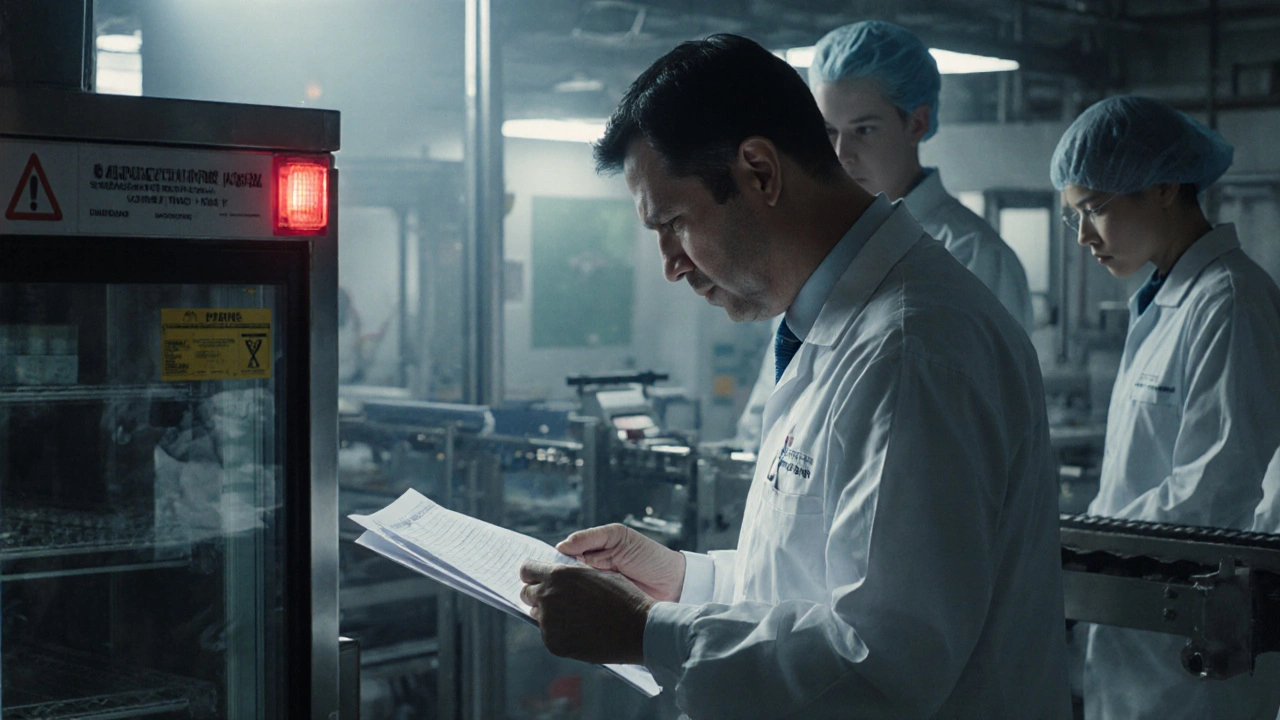
When the FDA shows up at your generic drug manufacturing facility, it’s not a surprise visit-it’s a routine check that can make or break your product’s path to market. If you’re preparing for one, know this: the FDA isn’t looking to shut you down. They’re looking to confirm you can consistently make safe, effective medicine. And if you’ve built your operations right, the inspection won’t feel like an audit-it’ll feel like a confirmation.
Why the FDA Inspects Generic Drug Facilities
The FDA doesn’t inspect generic drug plants because they distrust manufacturers. They do it because the law requires it. Under 21 CFR Part 211, every facility making drugs for the U.S. market must follow Current Good Manufacturing Practices (CGMP). These aren’t suggestions. They’re legal standards covering everything from how you clean your equipment to how you store stability samples. Generic drugs make up 90% of prescriptions in the U.S. That means millions of people rely on them daily. If one batch is contaminated, mislabeled, or underpotent, the impact isn’t just financial-it’s personal. That’s why the FDA uses a risk-based system to decide which facilities get inspected. A site with past issues, high-risk products, or sudden spikes in consumer complaints is more likely to be flagged than one with a clean record.Types of Inspections You Might Face
There are four main types of FDA inspections for generic drug makers:- Pre-Approval Inspection (PAI): This happens before your drug gets approved. The team checks if your facility can actually produce the drug exactly as described in your application. They’ll compare your process documentation to what’s happening on the floor.
- Routine Surveillance Inspection: These happen every 2-3 years for most facilities. The FDA picks sites based on risk-not randomly. If you’ve never had a problem, you’re less likely to be on the list.
- For-Cause Inspection: Triggered by a complaint, a whistleblower tip, or data anomalies. These are focused. If someone reported cloudy pills from your line, they’ll dig into that batch and related processes.
- Follow-Up Inspection: After a warning letter or major finding, the FDA comes back to see if you fixed it. They’ll check your corrective actions with a microscope.
What the FDA Looks For: The 6-System Approach
FDA investigators don’t wander around. They follow a structured method called the 6-System Inspection Model. Every inspection covers the Quality System, plus two or three others. Here’s what each one means:- Quality System: Always checked. This is the backbone. They’ll review your quality unit’s independence, your deviation logs, your change controls, and how you handle complaints. If your quality team reports to production, that’s a red flag.
- Facilities & Equipment: They’ll walk through your plant. Is the floor clean? Are your equipment logs up to date? Is your HVAC system validated? Are your water systems tested for purity? They’ll check calibration records and cleaning validation for every critical piece of equipment.
- Materials: Where do your raw materials come from? Do you test them? Do you have approved suppliers? They’ll pull your supplier qualification files and check batch records for incoming material testing.
- Production: Can you prove your process is consistent? They’ll ask for batch records from the last 6-12 months. Did you follow your SOPs? Were there deviations? How were they handled? If you have unexplained gaps in your records, they’ll flag it.
- Packaging & Labeling: This is where mistakes happen. They’ll check if your labels match your product specs. Is the lot number correct? Is the expiration date printed clearly? Do you have a system to prevent mix-ups between similar-looking products?
- Laboratory Control: Your lab is under the microscope. They’ll review your analytical methods, your validation reports, your stability studies, and your data integrity practices. Are your chromatograms real? Are your results backed by raw data? Are you deleting bad runs?
They’re not just checking boxes. They’re trying to understand your quality culture. Do people speak up when something’s wrong? Are problems fixed at the root-or just patched over?

What Happens During the Inspection
The FDA team usually arrives without warning. They’ll introduce themselves, show their credentials, and ask for a tour. Your job? Be ready. Don’t panic. Don’t try to hide anything. They’ll start with documents: SOPs, batch records, validation reports, training logs, deviation reports. Then they’ll go to the floor. They might watch you run a batch. They might ask an operator how they clean a mixer. They might open a fridge and check if stability samples are stored at 25°C/60% RH like your protocol says. They’ll take notes. Everything. Even small things. A loose cable on a machine. A missing signature on a form. A handwritten note on a log sheet. Don’t assume it’s minor. The FDA treats every inconsistency as a potential risk.Form FDA 483: The Inspection Report
At the end of the inspection, they’ll give you Form FDA 483. This isn’t a final verdict. It’s a list of observations-things they saw that don’t meet CGMP standards. Each item references a specific regulation, like 21 CFR 211.22(a) for lack of a qualified quality unit. The list is ordered by severity. The first item is usually the biggest concern. The rest follow in descending order of risk. You have 15 business days to respond. Your response isn’t just an apology. It needs to be a plan:- Explain what happened
- Why it happened
- How you’re fixing it now
- How you’re preventing it from happening again
A weak response-like “we’ll train our staff”-won’t cut it. The FDA wants evidence: updated SOPs, retraining logs, revised validation protocols, proof of implementation.
What Comes After: Warning Letters and Follow-Ups
If your 483 has serious issues-or if you ignore it-the FDA may issue a warning letter. This is public. It’s serious. It can delay approvals, block imports, or even lead to import alerts. But here’s the good news: the FDA wants you to fix it. In June 2025, they finalized guidance for Post-Warning Letter Meetings. This means you can request a meeting to discuss your corrective actions before they make a final decision. Use it. Talk to them. Show them you’re serious. Follow-up inspections happen within 6-12 months. They’ll come back to see if you actually changed anything. If you didn’t, the consequences get worse.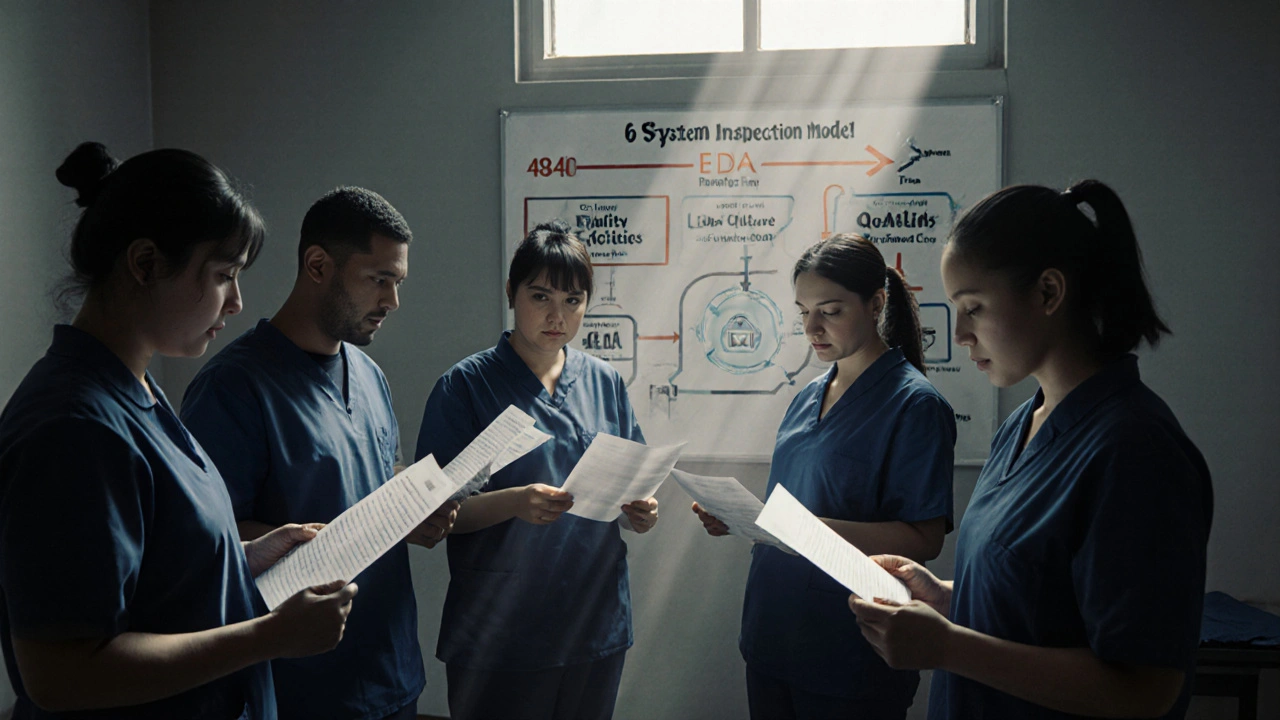
How to Prepare: Beyond the Checklist
Don’t wait until you get the inspection notice. If you’re waiting to prepare, you’re already behind. Start by treating every day like inspection day. That means:- Keep your facility clean and organized. No clutter. No expired materials. No open containers.
- Train your team regularly. Make sure everyone knows their SOPs and why they matter.
- Run mock inspections. Bring in an outside expert to audit your site. Ask them to play the role of an FDA investigator.
- Review your data integrity. Are your electronic records secure? Are you using audit trails? Are you deleting raw data?
- Know your quality culture. Do employees feel safe reporting problems? Or do they hide mistakes?
There’s a new program called PreCheck, launched in 2024. It’s not mandatory, but if you’re building a new facility or scaling up, it’s worth it. You submit detailed plans-layout, equipment, quality systems-before you even start production. The FDA reviews it and gives you feedback. It’s like getting a preview of your inspection results before you open the doors.
What Success Looks Like
The FDA says more than 90% of inspections find facilities to be in acceptable compliance. That’s not luck. That’s preparation. Companies that pass do it because they’ve built quality into every step-not as a compliance task, but as a core value. The best-prepared facilities don’t just answer questions. They anticipate them. They have clean records. They know their processes. They can explain why they do things the way they do. When the FDA leaves, they write an Establishment Inspection Report (EIR). If it says you’re operating in a “state of control,” you’ve won. You’ve proven you can make safe medicine, consistently. That’s the goal.What to Avoid
Don’t do these things:- Don’t try to hide records. The FDA has access to your electronic systems.
- Don’t blame suppliers without proof. They’ll ask for your supplier qualification data.
- Don’t say “we’ve always done it this way.” That’s not a valid CGMP defense.
- Don’t ignore small findings. They add up. One 483 item can turn into a warning letter.
Inspections aren’t about perfection. They’re about control. If you can show you know what’s happening, why it matters, and how you manage risk-you’ll be fine.
Are FDA inspections always announced in advance?
No. Routine inspections can be unannounced. Pre-Approval Inspections (PAIs) are usually scheduled, but even those can change. For-cause inspections are always unannounced. Always assume you’re being inspected today.
Can a facility be approved without an FDA inspection?
No. Every facility manufacturing generic drugs for the U.S. market must pass an FDA inspection before approval. Even if your drug is a copy of an approved product, your site must be inspected. There are no exceptions.
How long does an FDA inspection usually last?
It varies. A routine inspection might take 3-5 days. A Pre-Approval Inspection can last 1-2 weeks, especially for complex products. For-cause inspections are often shorter but more intense. The length depends on the scope, complexity, and findings.
What’s the biggest mistake companies make during an FDA inspection?
Trying to impress instead of being honest. Many companies overprepare their staff to give scripted answers. But FDA investigators are trained to spot inconsistencies. They’ll ask follow-up questions. If your answers don’t match your records, it looks like you’re hiding something. Better to say, “We’re reviewing that now,” than to guess.
Is it possible to fail an FDA inspection and still get approval?
Yes, but only if you fix the issues. If you get a 483, you can still get approval if you submit a strong, evidence-based response within 15 business days. The FDA evaluates your ability to correct the problem, not just the problem itself. Many companies get approved after addressing findings.
How often do generic drug facilities get inspected?
Most facilities are inspected every 2-3 years under routine surveillance. But risk-based factors can change that. Sites with past findings, high-risk products, or new production lines may be inspected more often. Some get inspected annually if they’re flagged for compliance concerns.


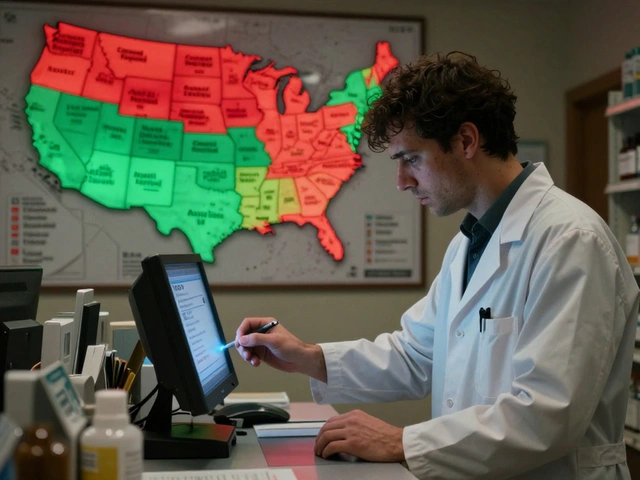
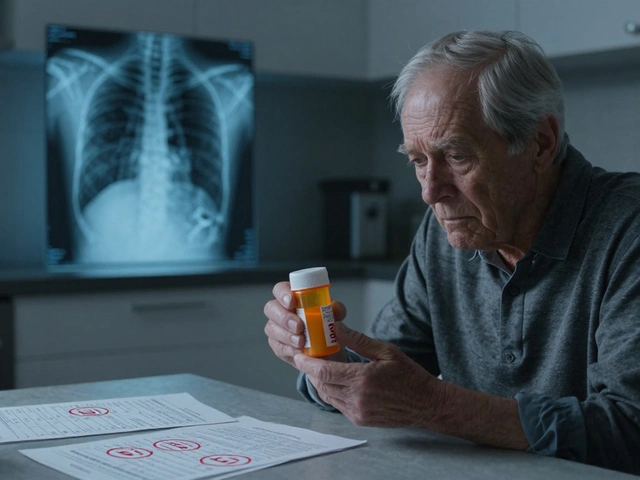

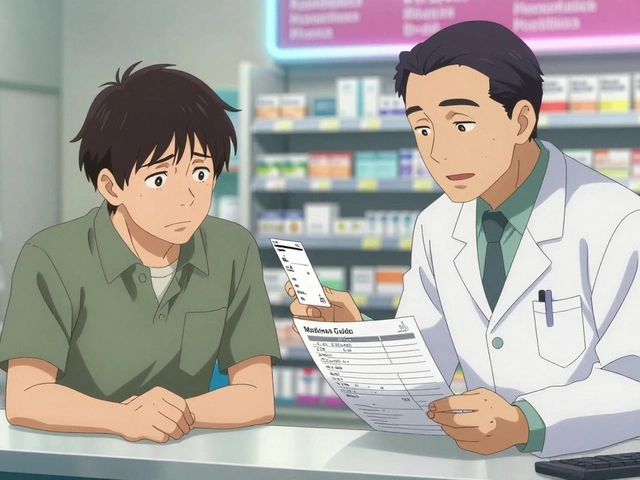

15 Comments
Just keep your house clean and your docs straight. If you’re not hiding anything, you’ve got nothing to fear.
Man, I’ve seen facilities where the QA team was treated like janitors. If your quality unit doesn’t report directly to the CEO, you’re already one typo away from a 483. Data integrity isn’t a checkbox-it’s your oxygen. And if your lab deletes raw chromatograms like they’re Instagram drafts? You’re not just failing compliance-you’re endangering lives. Stop treating CGMP like a paperwork game and start treating it like your neighbor’s life depends on it-because it does.
The FDA’s 6-system model is just bureaucratic theater. They don’t care if you’re compliant-they care if you’re American. Every time they hit a foreign plant, it’s not about safety-it’s about protectionism. Your SOPs are fine, but your country code? That’s the real red flag.
Let me be brutally honest: this entire system is a farce. The FDA? A bureaucratic cult. They don’t inspect for safety-they inspect for compliance theater. I’ve seen labs where the HPLC machine was older than the inspector’s career, yet they passed because someone filled out Form 483 with perfect font size. Meanwhile, real problems? Hidden under ‘minor deviations.’ And don’t get me started on ‘PreCheck’-it’s just a PR stunt to make pharma feel better while they outsource to India and China… and then act shocked when the pills turn blue!
Why bother? Most of these plants are run by guys who think 'validation' is a Netflix show. If you can’t even spell 'SOP' right, why should I trust your meds?
They’re lying. The FDA doesn’t care if your medicine works-they care if you’re not Chinese. Every inspection is a power play. They’ll nitpick a loose wire on a mixer while ignoring that 80% of APIs come from unregulated labs in Guangdong. This isn’t safety-it’s xenophobia dressed in lab coats. And don’t tell me ‘risk-based’-they’ve never inspected a single US-owned plant in India. Coincidence? I think not.
Inspections aren’t about rules-they’re about truth. If your culture rewards silence over honesty, no SOP will save you. The FDA doesn’t want perfect records-they want people who admit when they messed up. That’s the only thing more dangerous than a bad batch: a company that refuses to see its own flaws.
PreCheck? LOL. It’s a trap. They let you submit your plans… then they bury you in feedback for 18 months. Meanwhile, your investors are screaming, your engineers are quitting, and your facility gathers dust. This isn’t quality control-it’s corporate slow-cooking. And don’t get me started on the ‘warning letter’ theater. It’s not a chance to fix things-it’s a public execution notice disguised as a conversation.
There is a metaphysical dimension to regulatory compliance that is rarely acknowledged. The FDA’s inspection is not merely a procedural act-it is an ontological confrontation between the human impulse to control and the inherent chaos of material production. When the investigator opens a cabinet and sees a mislabeled vial, they are not merely observing a deviation-they are witnessing the collapse of epistemic order. The facility, in its desire to appear orderly, becomes a mirror of its own existential anxiety. To be ‘in a state of control’ is not to be free of error, but to be conscious of it-and to have the humility to document, correct, and transcend it.
Let’s be real-90% of generic drug facilities are barely holding it together. The FDA knows this. That’s why they pick the ones with the shiniest brochures. The rest? They get ignored until someone dies. Then they show up… with cameras. This isn’t regulation-it’s PR-driven punishment. And the ‘quality culture’ nonsense? That’s just corporate fluff to make managers feel like they’re doing something while the real work gets outsourced to the lowest bidder.
Hey, if you’re reading this and you’re prepping for an inspection-don’t panic. Just do the basics: clean your floors, train your people, and don’t lie. If you’ve got a solid system, you’ll be fine. And if you’re still stressed? Run a mock inspection. Bring in someone you trust to grill you. It’s not about passing-it’s about being ready when it counts. You got this.
They call it ‘risk-based’-but let’s be honest: it’s a lottery where your country’s flag determines your odds. Why do you think 80% of warning letters go to Indian and Chinese plants? It’s not because they’re worse-it’s because they’re cheaper. The FDA doesn’t want safe medicine-they want American-made medicine. And if you’re not paying union wages and using American cotton swabs? You’re not just non-compliant-you’re unpatriotic.
The entire system is a facade. Data integrity? They delete logs themselves in internal audits. The ‘6-system model’? A marketing brochure. The FDA has no real capacity to inspect 5,000+ facilities annually-they outsource to contractors who don’t even understand chromatography. And yet, they issue warning letters like they’re handing out candy. The real problem isn’t the manufacturers-it’s the system that rewards performative compliance over actual safety.
What if the FDA isn’t inspecting for safety… but for control? What if the 483s, the warning letters, the PreCheck delays-they’re not about drugs at all? They’re about maintaining a monopoly. Think about it: if every facility in the world could make generic drugs, the price would collapse. And who loses? The big pharma conglomerates. The FDA? They’re not regulators-they’re gatekeepers. Every inspection is a tax on innovation. And you? You’re just the pawn in their game of economic domination.
It’s fascinating how the term ‘quality culture’ is weaponized to absolve management of accountability. The real issue? Profit-driven decision-making masked as compliance. The FDA’s inspection is merely the final act in a play written by CFOs who cut corners on cleaning validation because ‘it’s not material.’ You can’t culture quality if your KPIs are tied to quarterly margins. This isn’t about inspections-it’s about capitalism’s failure to value human health over shareholder value.